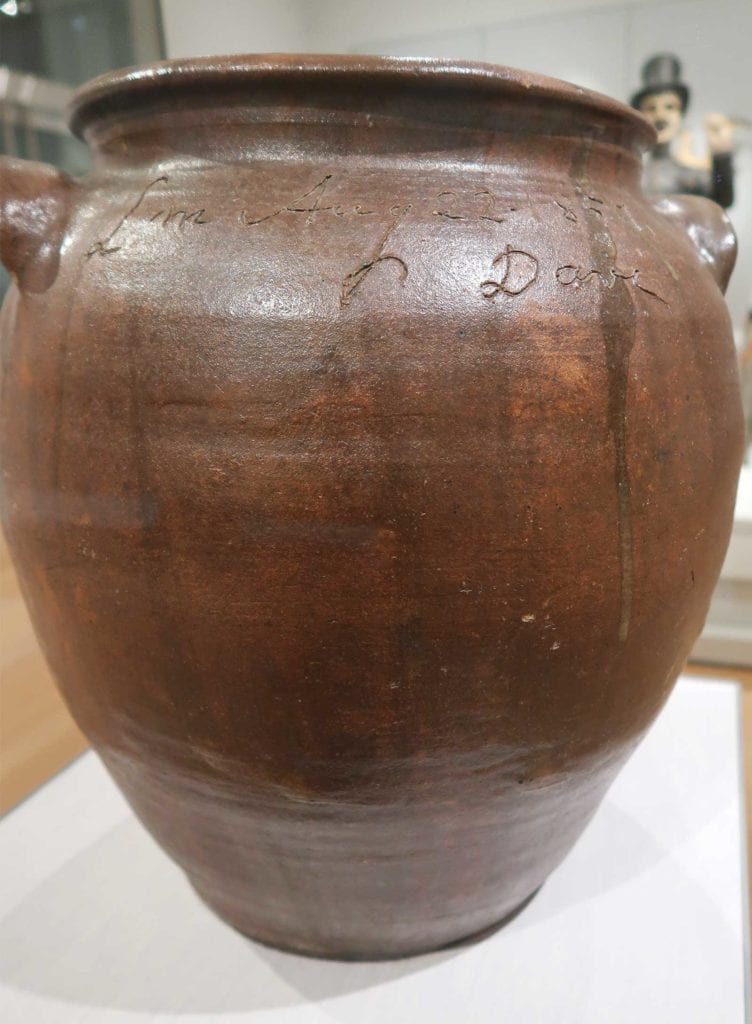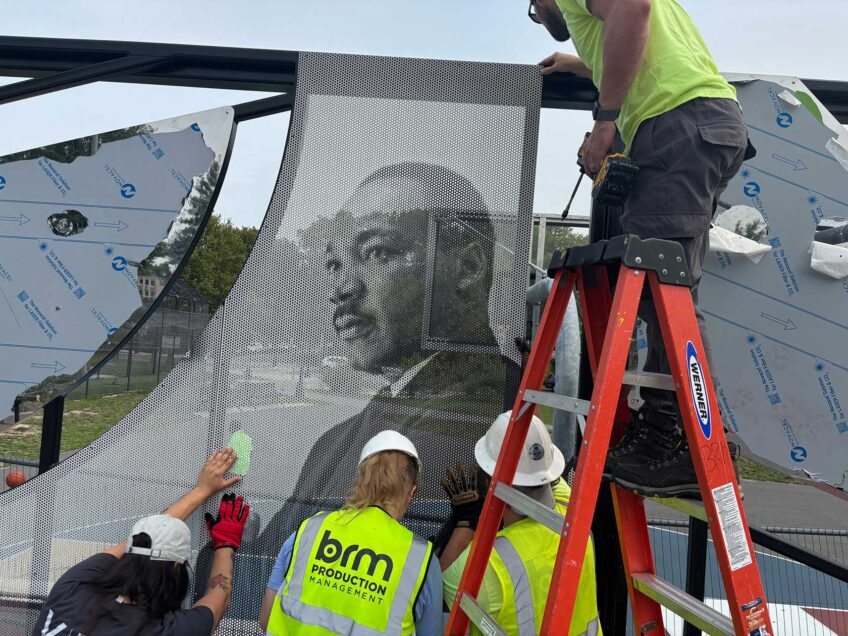
A muscular stone jug in the Art of the Americas wing at the Museum of Fine Arts Boston bears witness to the power of a person to speak across time through art, even when circumstances strive to enforce silence.
Crafted in 1858 by the enslaved African American potter and poet David Drake during a time when it was illegal for slaves to read or write, the handsome jar, glazed in brown alkaline, is signed and dated by Drake, known as “Dave the Potter.” He also inscribes the jar with a rhymed couplet (“I made this Jar for Cash- / though its called lucre trash”) and the initials “Lm” for his owner at the time, Lewis Miles.
The jar is one of about 40 known “poem vessels” fashioned by Drake, who was born in about 1800 on the Drake family plantation in South Carolina and died around 1870. Emancipated after the Civil War, he adopted the surname of Drake. Scholars speculate that a friend of the Drake family, a local newspaper publisher, taught him to read and write.
Living in Edgefield County, South Carolina, a pottery-making center rich in high-quality clays, Drake made pots while helping to run his owners’ kilns, which consumed 10 tons of firewood a day. In 1849, Lewis Miles bought him, and evidently valuing the potter’s artisanry, he took the unusual step of allowing him to sign and inscribe his works.
Drake’s inscriptions occasionally describe a piece of stoneware he crafted to store meat or serve some other function as a “noble jar.” His couplets expressed his humor, yearnings, good will and self-respect.
The only enslaved potter known to inscribe his works, Drake is the subject of scholarly studies, an award-winning children’s book, and several exhibitions, including one scheduled to open in February 2022 at the Metropolitan Museum of Art entitled “Stories in Clay: Stoneware from Old Edgefield District, South Carolina.”
“Signing and inscribing the jug was both a bold act of creativity and a declaration of authorship on Drake’s part,” notes Adrienne Spinozzi, the Met curator who is organizing the 2022 exhibition.
The Met recently acquired an inscribed storage jug by Drake, made a year after the one at the MFA. Drake’s poem vessels can also be found in other museums, including the Philadelphia Museum of Art; the Smithsonian collection of the National Museum of American History; and the McKissick Museum of the University of South Carolina, which in 1998 presented the first exhibition devoted solely to Drake’s pottery. A 2010 exhibition at the Milwaukee Art Museum curated by artist Theaster Gates Jr., featured the performance of a gospel choir that turned the potter’s couplets into songs.
Standing on their own, inscribed in stone, Drake’s couplets — whether poignant or witty — often address us with disarming immediacy. One gives a glimpse of daily life: “Dave belongs to Mr. Miles / Wher the oven bakes & the pot biles.” Another looks beyond the work at hand: “I wonder where is all my relations / Friendship to all — and every nation.”






